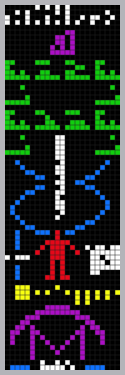
Yes, prime numbers are being used to send messages to aliens.
The Arecibo Message was broadcast into space via radio waves at a ceremony to mark the remodeling of the Arecibo radio telescope in Puerto Rico in 1974. The message was aimed at the current location of globular cluster M13 some 25,000 light years away.
The message consisted of 1,679 binary digits (0's and 1's). The number 1,679 was chosen because it is the product of two primes, 73 and 23. It was felt that any alien getting the message certainly wouldn't know English and maybe wouldn't know how to write. If an alien got the radio message, it would certainly know mathematics, so it would figure out to arrange it as 73 rows of 23 columns by using primes. The message is on the right after it has be so arranged. (Color has been added).
If you wish to see what the message says, go here.

